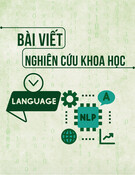
TNU Journal of Science and Technology
229(03): 158 - 167
http://jst.tnu.edu.vn 158 Email: jst@tnu.edu.vn
EMPIRICAL RESEARCH INTO CHALLENGES
OF TRANSLATING LEGAL TEXTS FOR ENGLISH MAJOR STUDENTS
Vu Van Tuan*, Le Thi Ha Linh
Hanoi Law University
ARTICLE INFO
ABSTRACT
Received:
19/12/2023
In the era of global integration, legal professionals currently have to be
armed with comprehensive knowledge of different legal jurisdictions.
English legal characteristics create significant obstacles in understanding
equivalent meanings of legal normative documents, so translation skills
are thought to be essential for legal professionals. For the purpose of
training current and future legal translators, this study aimed to
investigate the difficulties legal English major students might encounter
when translating legal documents. The descriptive cross-sectional study
employed a mixed-methods approach to examine 151 legal English major
students in two courses – K45 & K46 – at Hanoi Law University during
the first term of the 2023-2024 academic year. The research results
indicate that the main difficulties legal English students face when
translating legal texts were mainly due to the lexical characteristics of
legal English but not legal English writing styles. To address this
problem, legal English students should develop their learning autonomy
by either intaking some effective legal English translation techniques
which are given in the translated legal normative documents or using
information technology, especially utilising Internet resources for
broadening their knowledge about source and target laws equivalently.
Revised:
02/02/2024
Published:
02/02/2024
KEYWORDS
Empirical research
Challenge
Translating legal texts
Global integration
Legal jurisdiction
NGHIÊN CỨU THỰC TIỄN NHỮNG KHÓ KHĂN DỊCH TÀI LIỆU PHÁP LÝ
ĐỐI VỚI SINH VIÊN CHUYÊN NGÀNH TIẾNG ANH
Vũ Văn Tuấn*, Lê Thị Hà Linh
Trường Đại học Luật Hà Nội
THÔNG TIN BÀI BÁO
TÓM TẮT
Ngày nhận bài:
19/12/2023
Trong thời đại hội nhập toàn cầu, người làm nghề luật hiện nay cần được
trang bị kiến thức toàn diện về các lĩnh vực pháp lý khác nhau. Đặc tính
của tiếng Anh pháp lý tạo ra những trở ngại đáng kể trong việc hiểu ý
nghĩa dịch tương đương trong văn bản pháp luật, bởi vậy kỹ năng dịch
thuật pháp lý được cho là rất cần thiết đối với các chuyên gia pháp lý. Với
mục đích đào tạo các biên dịch viên pháp lý hiện tại và tương lai, nghiên
cứu này tìm hiểu những khó khăn mà sinh viên chuyên ngành tiếng Anh
pháp lý có thể gặp phải khi dịch tài liệu pháp lý. Nghiên cứu mô tả sử dụng
phương pháp tiếp cận hỗn hợp để khảo sát 151 sinh viên chuyên ngành
tiếng Anh pháp lý trong hai khóa học K45 & K46 tại trường Đại học Luật
Hà Nội trong học kỳ 1 năm học 2023-2024. Kết quả nghiên cứu chỉ ra rằng
những khó khăn sinh viên tiếng Anh pháp lý gặp phải khi dịch văn bản
pháp lý chủ yếu liên quan đến đặc điểm từ vựng của tiếng Anh pháp lý,
sinh viên không gặp nhiều khó khăn trong phong cách viết tiếng Anh pháp
lý. Để giải quyết vấn đề này, sinh viên tiếng Anh pháp lý nên phát triển
tính tự chủ học tập của mình bằng cách áp dụng một số kỹ thuật dịch tiếng
Anh pháp lý hiệu quả được thông qua các văn bản pháp lý đã được dịch,
hoặc sử dụng công nghệ thông tin, đặc biệt là tận dụng các nguồn tài
nguyên Internet để mở rộng kiến thức Luật tương ứng trong và ngoài nước.
Ngày hoàn thiện:
02/02/2024
Ngày đăng:
02/02/2024
TỪ KHÓA
Nghiên cứu thực tế
Những khó khăn
Dịch văn bản tiếng Anh
Hội nhập toàn cầu
Lĩnh vực pháp lý
DOI: https://doi.org/10.34238/tnu-jst.9414
* Corresponding author. Email: tuanvv@hlu.edu.vn

TNU Journal of Science and Technology
229(03): 158 - 167
http://jst.tnu.edu.vn 159 Email: jst@tnu.edu.vn
1. Introduction
In the era of globalization, international contracts and treaties have occurred transnational
corporations [1], which requires legal professionals to have a profound understanding of multi-
English legal systems, which is commonly referred to legal professionalism or so-called legalese
– the specialized terminology and phrasing with complex vocabulary, obscure phrasing, and
anachronisms used by lawyers and in legal documents which is difficult for lay people to
understand [2, p. 64], [3]. Under the impact of increasingly globalized economy, translanguaging
is the only means for bridging the gap between legal concepts via the translation among legal
professionals. Translation also narrows down differences in the areas of economic, social and
technological advancement between developed and developing countries by providing access to
concepts and terminology that may be unfamiliar to legal professionals in different jurisdictions.
Legal professionals take charge of compromising the diversified legal systems around the world.
For this reason, professional learners probably use legal translation skills as a support tool to
improve their legal English language as well as professional knowledge [4, p. 103]. For English
language teaching and learning (ELT), there is a specialized focus on English for specific
purposes (ESP) in relation to General English (GE), and English for Academic Purposes (EAP)
[5]. Consequently, ESP is designed to meet students’ English language standards in a specific
profession [6] - [7]. Legal English is known for its complexity and professionalism including
specific technical terms or concepts which are necessary for researching jurisprudence [8]. This
specialized language is commonly governed by the resolution of social relations between nations
and individuals within nations or at a global scale. However, one of the main difficulties when
learning legal English is the complexity of lexical terms and concepts [9] - [10], mostly
originating from archaic and Latin expressions [11] - [13]. In other words, legal English
translation has imposed significant regulations due to the diversity of legal systems, laws and
cultural contexts, which leads to the complexity and possibility of legal English meanings of one
legal document to be interpreted differently in another language. Correspondingly, a legal
translator is supposed to be an expert in a variety of legal law system and possesses a profound
comprehension of legal terminologies to ensure accurate and effective translation. A number of
recent scholars have discussed at length the difficulties of the translation of legal documents to
date. Although the research findings in the study of [14] in terms of the translating legal
documents indicates that Latin juridical expressions along with cultural differences hinder the
translation of legal documents, the study does not specify the scope of the differences in
translation between learners and professionals. As stated in another study done by [15] in
Vietnam on the translation of legal documents, they affirm that significant challenges in the
accurate translation of legal terms from English to Vietnamese blame for the inequivalence of
legal and regulatory systems, linguistic difficulties and cultural disparities. In this context, the
representative respondents were chosen by simple random sampling with legal English major
students (LE students) in the courses No. 45 and 46 (hereafter students K45 and K46) pursuing
bachelor’s degrees at the Faculty of Legal Foreign Languages at Hanoi Law University (HLU)
during the first semester of the 2023-2024 academic year. In particular, this study would pivot on
the following questions:
1. What are the difficulties associated with translating legal texts?
2. What are the major causes of those difficulties?
2. Materials and Methods
2.1. Research design
The researcher utilised the mixed-methods approach to conduct a cross-sectional study of 151
LE students K45 and K46 at HLU. Approximately 241 LE students who have completed the legal
English translation and interpretation modules 1&2 as compulsory subjects at HLU constituted

TNU Journal of Science and Technology
229(03): 158 - 167
http://jst.tnu.edu.vn 160 Email: jst@tnu.edu.vn
the study population; whereas the researchers were, under time and budget constraints, unable to
gather information from the entire population; thus, they used Slovin’s formula with a stratified
random sampling method to select a sample of 151 respondents. The researcher-made
questionnaires were floated personally at the campus. The semi-structured interviews were
conducted face-to-face and telegram interviews with the 30 students with the permission to take
note of the interviews to transcribe the response for this research. Lastly, the IBM SPSS v.25
application was used to analyse and synchronise the collected data after going through a
screening process from two sources. The researchers were able to articulate the accuracy and
reliability of the research findings from the primary sources.
2.2. Research instrument and data collection
The researchers constructed their own researcher-made questionnaires. Specially, the survey
questionnaire included 21 statements, dividing into two groups of characteristics namely 11
lexical featured and 10 syntactic featured questionnaires, which were presented in the five-point
Likert scales to investigate learners’ attitudes towards legal translation difficulties. The 10 semi-
structured questions were served as guiding statements to 30 learners. The questionnaires were
constructed internally before they were sent to 3 experts on legal English and translation for
content validation. After that, the questionnaires were fine-tuned properly, and underwent a pilot
study with a group of 17 learners to validate their strengths and weaknesses. The researchers
retained the statements in proportion to the confidence level (α = 0.87, fairly high [16]). The final
research instrument comprised of both the survey questionnaires, particularly lexical features and
the syntactic features, and 10 semi-structured interview questions for learners. After obtaining the
necessary preparation and permission for conducting the research, the researchers implemented
the study in two weeks.
2.3. Data analysis
The collected data were screened, systemised, analysed, and interpreted. The questionnaires
were used descriptive statistics to decipher the 5-point Likert scale statements to find out the
means and standard deviations relevant to the interval scales such as always or mostly inaccurate
(1.0 – 1.80), usually inaccurate (1.81 – 2.60), somewhat accurate (2.61 – 3.40), usually accurate
(3.41 – 4.20), and always or almost always accurate (4.21 – 5.0). Additionally, NVivo v.12
application was employed to ascertain the accountability of the qualitative data in the frequency
with which the perspectives of responders’ transcripts during the semi-structured interviews.
3. Results and Discussion
3.1. The result of difficulties related to the lexical features
Related to the lexical features of legal English, LE students often need help in translating legal
texts from Vietnamese to English and vice versa. One typical challenge is the use of technical
terminology, which often requires clarification (M = 3.6; SD = 0.891). This figure denotes that
the level of difficulty in translating legal texts varies among the learners according to the standard
deviation. Likewise, the mean (3.6) indicates that some responders find it very difficult to
translate ordinary words with special meanings (M = 3.51; SD = 0.701), together with the
dissimilar standpoints on this aspect by looking at the standard deviation. Furthermore, the
culture-specific characteristic of legal terms possibly constitutes a significant translation
challenge (M = 3.73; SD = 0.769). Legal metaphors and metonymies are considered the most
difficult aspects of translating legal texts for these undergraduates, demonstrated by the mean
score of 3.9, which is considered pretty high and the highest among the charts (M = 3.90; SD =
0.597). This issue has the highest mean and is asymptotic to the lower limit of “always accurate”.
Translating pronominal adverbs is somehow found to be a challenge among the answerers (M =
3.52; SD = 0.855). It is true to state that foreign words and Maxims stemming from Latin or

TNU Journal of Science and Technology
229(03): 158 - 167
http://jst.tnu.edu.vn 161 Email: jst@tnu.edu.vn
French origin are difficult for these students to understand and translate (M = 3.76; SD = 0.809).
Specifically, 36.4% of the total answers consider understanding and translating foreign words or
Maxims borrowed from Latin or French to be strongly difficult, which is the highest percentage
among all categories, thus showing that most informants find it highly challenging. In a similar
vein, the standard deviation illustrates that participants' viewpoints differ. Similarly, legal
abbreviations cause obstacles for student translators (M = 3.54; SD = 0.502). Translating legal
texts can be challenging for LE students, primarily due to the use of doublets and triplets that
convey a single legal concept (M = 3.53; SD = 0.612). The informants probably confront
difficulties in understanding archaic expressions and words, which are commonly encountered in
legal texts (M = 3.58; SD = 0.810). For instance, the word "hereinafter" can be confusing because
the translator may not be able to define the person or thing referred to in the text. The high
standard deviation in this statement suggests that many people find archaic words to be obstacles
(M = 4; Freq. = 45; same as 29.8%, and M = 5; Freq. = 39; equivalent to 36%), while others
consider them neutral (M = 3; Freq. = 48; representing for 31.8%). Phrasal verbs in legal texts are
blamed for a cause of trouble for undergraduates, as they are often used in a quasi-technical sense
(M = 3.49; SD = 0.710); on the contrary, phrasal verbs are thought to be the least problem due to
the lowest mean score. Additionally, unfamiliar pro-forms in legal texts can create significant
challenges for translators (M = 3.72; SD = 0.804).
In general, LE students genuinely think lexical features of legal English cause hardships in
translating. They consider lexical features of legal English, usually difficult to translate. This
assertation is in harmony with the findings of the prior study [14], which emphasises the
hardships of lexical features in translating legal texts. Particularly, legal metaphors and
metonymies are considered the most challenging lexical difficulties for LE undergraduates.
During the survey phase, numerous learners insisted on having difficulty in recognising legal
metaphors and metonymies during the translation process, thus leading to wrong translations. In
contrast, the phrasal verb in a quasi-technical sense is considered the least difficult lexical feature
of legal translation. It can be easily understood for the simple reason that phrasal verbs can be
either looked up in the dictionary or searched online to find meaning and methods of usage.
Some of the statements are strongly agreed by most of the participants, while not a small number
of respondents have different perspectives such as foreign words borrowed from Latin or French.
It is concluded that the level of linguistics knowledge among responders is significantly different;
whereas, HLU LE undergraduates encounter hardships translating legal texts due to archaic
language, namely "hereinafter" and "hereto", and the translation of doublets and triplets. This is
supported by the finding of [17] that archaic words confuse legal word expressions, while legal
student translators often confront difficulties in understanding and translating doublets and
triplets. Withdrawal through this study, translating legal texts seems to be challenging for HLU
translation collegians due to culture-specific terms. This difficulty has been reinforced by
previous studies [1], [8], [12], [17]. These researchers emphasise the importance of cultural
knowledge when translating legal texts. Furthermore, the results conclusively show that legal
English translation learners have problems with legal concepts and abbreviations while
translating legal text. Lastly, ordinary words with special meanings, pronominal adverbs and
unfamiliar pro-form pose trouble during the translation procedure for LE undergraduates.
3.2. The result of difficulties related to the syntactic features
Concerning the syntactic features, out of the 6 items of syntactic obstacles in legal translation,
three of them are considered somewhat accurate with the means ranging within 3.36 and 3.39,
which denotes the truly medium mean scores. Those include “long and difficult structure of legal
sentences” with a mean score of 3.39; SD = 0.809), “tense” (M = 3.36; SD = 0.789, and
“multiple negatives” with these values (M = 3.36; SD = 0.623). On the other hand, the findings
showed that the LE collegians at HLU usually consider the following issues as problems when

TNU Journal of Science and Technology
229(03): 158 - 167
http://jst.tnu.edu.vn 162 Email: jst@tnu.edu.vn
they translate legal texts: “punctuation and capitalisation” (M = 3.42; SD = 0.629); “binomial
expressions and parallel structures” possessing a typical mean equal to 3.55 (SD = 0.669);
“legal text layout” (M = 3.64; SD = 0.569), which is the highest average score altogether.
Although those constituted the highest mean scores, they are appraised pretty low scores
compared to others.
Overall, not all syntactic difficulties in translation impact legal English the same way. While
some of them are usually accurate, others’ accuracy depends on contexts and people.
Specifically, based on the above results, it is logical to articulate that learners who are learning
legal English translation encounter difficulties when translating legal texts. The primary reason
for their struggle is legal text layout, while the subject, object, and adverbs of the texts can be
shuffled in order to make legal text impersonal and raise the level of formality in legal texts. This
finding is understandable because decoding SL is a must, which is reported in [7]. Next, the
second problem they encounter is translating legal binominal expressions and parallel structures,
which is difficult for translators, especially those with limited skills, to comprehend without
understanding the entire text. This conclusion is in agreement with the previous studies [1], [6],
[9], which assert that complex legal sentences and expressions pose significant challenges to
translation undergraduates. Punctuation and capitalisation are considered the third most difficult
factors of the syntactic group. These findings are in line with the research of Taamneh [13], who
confirms that punctuation and capitalisation are sources of difficulty facing legal translators when
translating from English into other languages and vice versa. What is more, the difficulty in the
structure of long legal sentences poses an obstacle to novice translators like LE students, which
does not fully agree with the findings of [6], [9], which conclude that complex legal sentences are
a major challenge to HLU LE undergraduates when translating legal texts; nonetheless, this
difficulty only negatively impacts them a little. Tenses and multiple negatives are the two least
difficulties of the syntactic group. On the one hand, tenses cause a little problem that can be fully
understood due to the cleanliness of tenses in English. It is possible to minimise multiple
negatives by paying slight attention. Taamneh [13] affirms that legal texts are difficult to translate
due to their complex tense and grammar structures, requiring translators to have extensive
knowledge of both the source and target languages. Similarly, this finding is consistent with [18]
on interrelated negatives that pose difficulties.
The only obstacle that is considered somewhat accurate in this group is the concept or norms,
which holds the lowest mean (M = 3.36; SD = 0.549). LE undergraduates often seek for suitable
equivalents to terms (M = 3.53; SD = 0.751). Addressing the degree of formality in word choice
raises a significant issue in translating legal text for LE learners, which is usually a true statement
for HLU (M = 3.52; SD = 0.695). Lastly, “the lack of equivalent knowledge relating to legal texts
poses many difficulties in translating legal texts properly” is considered a commonly accurate
statement for LE undergraduates, which holds the highest mean score of the group (3.70) and the
standard deviation is 0.624. Generally, HLU learners opine that concepts or norms experience the
least difficulty for LE students when translating legal texts. As stated in [7], the legal system is
connected to the content and characteristics of law, and Taamneh [13] further clarifies that legal
English is associated with common law, where concepts can only be comprehended in the
context of common law; in contrary, Vietnamese legal system is inheriting the civil law tradition.
As a result, the differences between the legal systems in Vietnam and English-speaking countries
create challenges in translating legal terms between the two languages. Despite that, LE
undergraduates have different viewpoint, which is because of the help of law dictionaries and
legal textbooks commonly used by not only undergraduates of legal English majors but HLU
learners in general. Hence, translation of legal texts can be facilitated by those methods, which
enables them to alleviate fewer obstacles than others. Moreover, the results indicate that LE
students encounter various hurdles when translating legal texts. These findings are supported by
the findings of [17], [19], who conclude that the lack of suitable equivalents of legal terms is their



![Mẫu câu viết thư thân mật bằng Tiếng Anh [Chuẩn Nhất]](https://cdn.tailieu.vn/images/document/thumbnail/2025/20250708/caotiendat91211.thd2017@gmail.com/135x160/80151751961845.jpg)
![Tài liệu gợi ý viết email tiếng Anh và 35 đề thi mẫu [chuẩn SEO]](https://cdn.tailieu.vn/images/document/thumbnail/2025/20250708/caotiendat91211.thd2017@gmail.com/135x160/25321751961846.jpg)






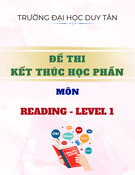
![Đề cương môn Tiếng Anh 1 [Chuẩn Nhất/Mới Nhất]](https://cdn.tailieu.vn/images/document/thumbnail/2025/20251130/cubabep141@gmail.com/135x160/51711764555685.jpg)
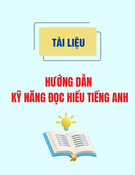

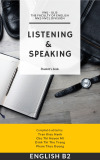





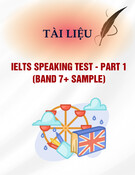

![Mẫu thư Tiếng Anh: Tài liệu [Mô tả chi tiết hơn về loại tài liệu hoặc mục đích sử dụng]](https://cdn.tailieu.vn/images/document/thumbnail/2025/20250814/vinhsannguyenphuc@gmail.com/135x160/71321755225259.jpg)
